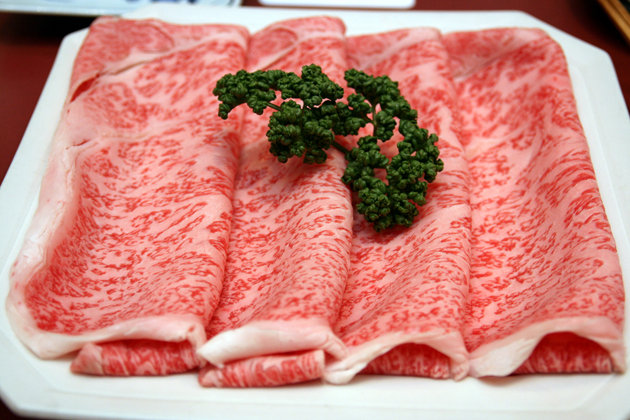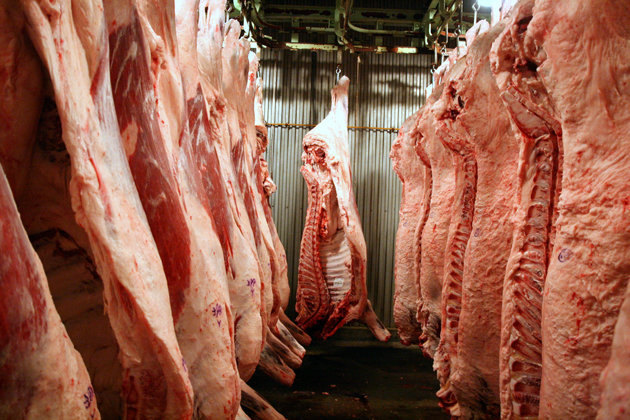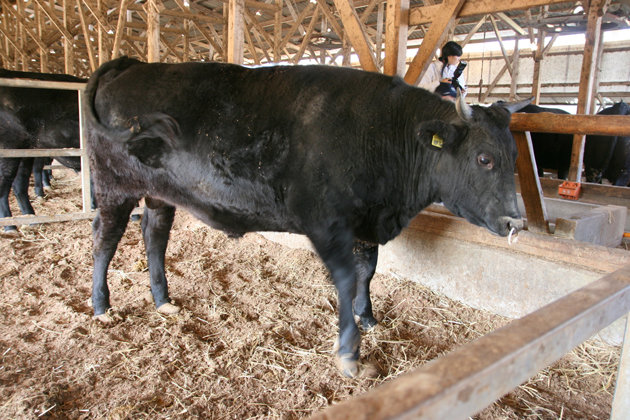
The Making of Saga Beef
By Catherine Ling - Friday, Nov 02, 2012
Does that beautiful marbling make you drool? It’s like florets of flesh in a bed of fat. This is the highest grade wagyu beef produced in Saga prefecture in Kyushu, Japan. We’ve all heard of Kobe and Matsuzaka beef, but Saga-gyu or Saga beef is one of the 200 brands of wagyu in Japan fast coming up the ranks. What exactly does it take to produce wagyu like this? Do the cattle really enjoy massages with beer, listen to classical music and drink champagne? We take a look at how wagyu beef is really produced, specifically in Saga.
Saga may be a relative newcomer to wagyu farming, having started less than 30 years ago in 1984, but the prefecture is now one of the top five producers in Japan (Kagoshima, Miyazaki, Hokkaido, Saga, and Iwate, in that order).
Japan wagyu annual output is about 500,000 heads of cattle resulting in 150,000 tonnes of meat. Saga’s contribution is more than 22,000 heads of cattle. Most of it is handled by the JA Group, an agricultural cooperative group which helps its members market products and procure production materials with greater economies of scale. But there are some smaller farmers who go the individual route.

Japanese “kuroge washu” or black hair cattle accounts for about 95% of all wagyu production in Japan, because the end product is very consistent and high quality. The other three breeds are red/brown hair, shorthorn and polled horn.
They are fed on a special compound feed of corn, wheat, barley, soybean, sorghum, rice bran, rice straw and husk. Feed blend and timing management is actually their largest challenge. Young cattle given feed that’s too fatty will be overly energetic and result in meat that’s not as tender. The farmers also try their best to keep the cattle free from stress.
Sorry but all the stories about beer massages are not true. There is no special treatment. What really happens is that during cattle competitions, the farmers often have festive picnics with sushi and beer. As brushing is one of the important aspects of preparing a prize animal for show, sometimes a farmer splashes on some of his beer for fun. And so the tales begin…
Anyway, external application of beer does nothing for intramuscular fat (marbling). Genes play a very important part, so breeding is carried out very selectively. A prized cow can be bred about ten times (once a year), usually by artificial insemination.
These cattle are large animals that can reach nearly 1.7m in height. Steers are castrated males that grow up to 650-750kg, while heifers (females) reach 600-650kg in weight. While it’s a subjective issue, some buyers will request for female carcasses for a perceived difference in the meat texture (more tender perhaps?).
Wagyu cattle are also fed longer than regular cattle to increase their marbling. They are generally 30 months before they get sent to the abattoir. Some may be slaughtered earlier at 24 months or so, but they can be fattened beyond that. However, 30 months is the export cut-off date, as the risk of BSE (mad cow disease) also increases with age. Rarely are any cattle kept beyond 36 months.

One of wagyu’s definitive features is its softer fat due to the high levels of mono-unsaturated fatty acids. The buyer is able to put his finger to the carcass and test the fat. This lower melting point also explains why wagyu melts more readily in your mouth.
Singapore started importing Saga-gyu in August 2011. Saga beef supply is more steady, so if Kobe or Matsuzaka isn’t readily available, we now have another choice for prime wagyu beef. And judging from the fine marbling and comparable taste, it’s a nice option to have.



